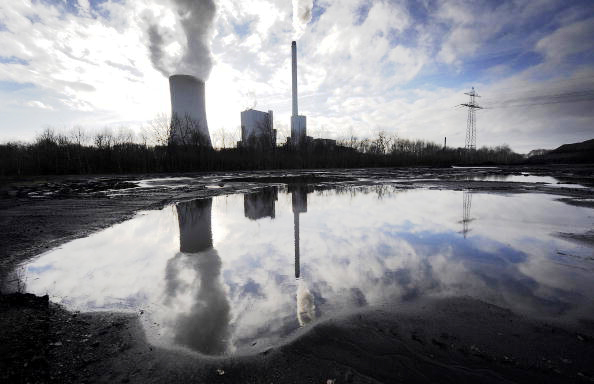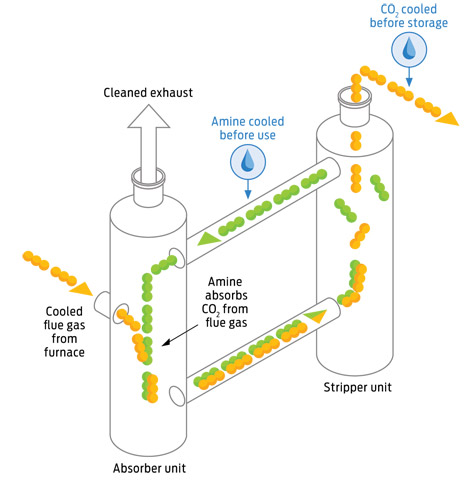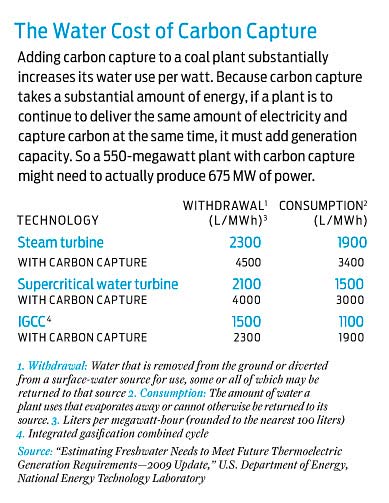THE ENERGY EFFICIENT MORTGAGE means comfort and savings. When you are buying, selling, refinancing, or remodeling your home, you can increase your comfort and actually save money by using the Energy Efficient Mortgage (EEM). It is easy to use, federally recognized, and can be applied to most home mortgages. EEMs provide the borrower with special benefits when purchasing a home that is energy efficient, or can be made efficient through the installation of energy-saving improvements.
Homeowners with lower utility bills have more money in their pocket each month. They can afford to allocate a larger portion of their income to housing expenses. If you have more cash, why not buy a better, more comfortable home? There are two options with the Energy Efficient Mortgage.
The TWO SIDES of the EEM COIN
Finance Energy Improvements!
| Cost-effective energy-saving measures may be financed as part of the mortgage! | |
| Make an older, less efficient home more comfortable and affordable! |
Increase Your Buying Power!
| Stretch debt-to-income qualifying ratios on loans for energy-efficient homes! | |
| Qualify for a larger loan amount! Buy a better, more energy efficient home! |
WHO BENEFITS from the ENERGY EFFICIENT MORTGAGE?
Buyers:
| Qualify for a larger loan on a better home! | |
| Get a more comfortable home NOW. | |
| Save money every month from Day One. | |
| Increase the potential resale value of your home. |
Sellers:
| Sell your home more quickly. | |
| Make your house affordable to more people. | |
| Attract attention in a competitive market. |
Remodelers/Refinancers:
| Get all the EEM benefits without moving. | |
| Make improvements which will actually save you money. | |
| Increase the potential resale value of your home. |
Pay for energy improvements easily, through your mortgage. Your lender can increase your loan to cover energy improvement costs. Monthly mortgage payments increase slightly, but you actually save money because your energy bills will be lower!
HERS, or Home Energy Rating Systems
A HERS report is similar to a miles-per-gallon rating on a car. HERS are programs which provide evaluations of an individual home’s energy-efficiency. A HERS report is prepared by a trained Energy Rater. Factors such as insulation, appliance efficiencies, window types, local climate, and utility rates are used to rate the home and calculate energy costs.
A HERS Report Includes:
| Overall Rating Index of the house as it is. | |
| Recommended cost-effective energy upgrades. | |
| Estimates of the cost, annual savings, and useful life of upgrades. | |
| Improved Rating Index after the installation of recommended upgrades. | |
| Estimated annual total energy cost for the existing home before and after upgrades. |
A Rating Index is between 1 and 100. A lower index indicates greater efficiency. Cost-effective upgrades are those which will save more money through energy savings than they cost to install.
A HERS rating usually costs between $300 and $800. This could be paid for by the buyer, seller, lender, or real estate agent. Sometimes the cost of the rating may be financed as part of the mortgage. No matter how the rating is paid for, it is a very good investment because an EEM could save you or your buyer hundreds of dollars each year.
THIS IS WHY the EEM WORKS
Energy-efficient homes cost less to own than non-efficient homes, though they may start off with higher price tags.
Older Same Home with
existing home energy improvements
Home price $ 150,000 $ 154,816
(90% mortgage, 8% interest)
Loan amount $ 135,000 $ 139,334
Monthly payment* $ 991 $ 1,023
Energy bills + $ 186 + $ 93
The true monthly
cost of home ownership $ 1,177 $ 1,116
Monthly savings - $ 61
Estimated mortgage payments are based upon principle and interest only, and do not include taxes and insurance. Value indicated here is for comparison only, and will vary from home to home.Many homes qualify for energy upgrades. This home qualified for $4,816 in upgrades. With the EEM, lenders recognize the savings the upgrades will bring. Borrowers may use these potential savings like extra cash, and add the cost of upgrades into the mortgage, paying them off easily as part of the monthly mortgage payment. Once the upgrades are installed the potential savings turn into real savings.
Another EEM option is for the lender to allow higher qualifying ratios for borrowers who will occupy a property meeting certain standards for energy efficiency. When the home has been built or retrofitted in conformance with the International Energy Conservation Code (IECC) standards for 2000 or later, then the lender may “stretch” the borrower’s qualifying ratios. A debt-to-income ratio “stretch” means that a larger percentage of the borrower’s monthly income can be applied to the monthly mortgage payment. That means the buyer has more borrowing power based up on the same income.
WHAT the EEM DOES for a BUYER’S BORROWING POWER
For a standard home without energy improvements:
| Buyer’s total monthly income | $5,000 |
| Maximum allowable monthly payment 29% debt-to-income ratio | $1,450 |
| Maximum mortgage at 90% of appraised home value | $207,300 |
For an energy-efficient homes (2000 IECC)*:
| Buyer’s total monthly income | $5,000 |
| Maximum allowable monthly payment 33% debt-to-income ratio | $1,650 |
| Maximum mortgage at 90% of appraised home value | $235,900 |
Added borrowing power due to the Energy Efficient Mortgage: $28,600
*Interest rate 7.5%, downpayment of 10%, 30-year term, principal & interest only (tax & insurance not factored.)
In other words:
This buyer got into a home worth thousands of dollars more, just because it was energy efficient. That could mean a home with more space, in a better location, or in better overall condition.
FHA’s Energy Efficient Mortgage Program
The FHA Energy Efficient Mortgage covers upgrades for new and existing homes and is now available in all 50 states. Key features includes:
| Loan limits may be exceeded | |
| No re-qualifying | |
| No additional down payment | |
| No new appraisal |
The FHA 203(k) loan enables a home buyer to obtain a single loan to finance both property acquisition and to complete major improvements after loan closing and can be combined with FHA’s EEM.
CASE STUDY:
Customer Quote: “The EEM was the second best thing that ever happened to me. The first best was actually being able to buy a home. This is our first home, and the EEM saved us a lot of headaches because we knew what we needed to do to the house. It’s nice and comfortable now. Even my dogs are happy. I am very impressed.” -Pat Theard
First-time home buyers Patricia and Mynette Theard purchased their home in California. It was built in 1940, and sold for $150,000. They got an FHA loan for 95% of the value of the property. The lender saw an opportunity for them to improve on their investment and recommended an Energy Efficient Mortgage.
A HERS Rating on the home recommended $2,300 in energy improvements including ceiling, floor and furnace duct insulation, plus a setback thermostat. The lender set aside an extra $2,300 for the improvements, bringing the total loan amount from $142,500 to $144,800. The loan closed, the Theards moved in, and the improvements were installed. The monthly mortgage payment increased by $17, but the Theards are saving $45 each month through lower utility bills.
Ask your lender about an Energy Efficient Mortgage. If they are not knowledgeable about the EEM, encourage them to learn about it, or find another lender.
WHICH BUYERS and HOMES ARE ELIGIBLE?
All buyers who qualify for a home loan qualify for the EEM. The EEM is intended to give the buyer additional benefits on top of their usual mortgage deal. The lender will use the energy efficiency of the house, as determined by a HERS rating, to determine what these benefits will be.
Energy Efficient Mortgages can be used on most homes. Availability is not limited by location, home price or utility company. Your lender will help you choose which loan type is best for you.
Get an EEM on:
| Older homes qualifying for upgrades | |
| New or old homes not requiring upgrades | |
| New construction |
SOME THINGS to KEEP in MIND
It is best to have the HERS Rating done as early in the loan process as possible. This way, the Rating can be performed while other aspects of the loan are being processed. Closing the loan should not be delayed. You may get a larger tax deduction with the EEM because the interest on mortgage payments is tax deductible. This can save you more money than paying for energy upgrades with a credit card, bank loan, or cash, none of which are usually tax deductible.
Each house is as unique as its owner. Benefits derived from the EEM will vary from one house to another, and the benefits in the examples in this book may not apply in all cases. Your lender will be your best source of information on your own EEM benefits.
CASE STUDY:
Adding Energy Improvements through a Home Refinance
“It’s wonderful. We’re just amazed at the difference. We’ve hardly used the furnace all winter. The house is much quieter too. It makes sense for everyone to do it.” -Caroline Chang
In the fall of 1995, Caroline and Tommy Chang decided to refinance their 35-year-old home to take advantage of lower interest rates. Their lender suggested they get a HERS Rating on the home so they could finance energy improvements through their new mortgage deal as well.
The lender increased the loan by $8,760 to cover the cost of energy improvements. Their final loan amount was $176,400, which is higher than they could have gotten with out the EEM. The loan closed and the improvements were installed. These included double-paned windows, wall insulation, ceiling insulation, furnace duct repairs and insulation, and a few smaller items. These improvements, combined with their lower mortgage interest rate, mean the Changs will be saving about $230 per month. They will be more comfortable too!
A house could be your biggest investment ever. Use the Energy Efficient Mortgage and invest wisely.
To find out how, call the organizations listed on the back cover.
With an Energy Efficient Mortgage, you can START SAVING MONEY TODAY. Contact Us for a pre-qualification site assessment.
Disclaimer Statement
Pacific Gas and Electric Company and the Department of Energy do not endorse nor imply endorsement of any product, service, individual or company mentioned and/or involved in this publication. Anyone undertaking to rely on particular details contained herein shall do so at his/her own risk and should independently use and/or verify their applicability to a given situation.
Pacific Gas and Electric Company, 1996, all rights reserved.
Publication developed by:
Pacific Gas and Electric Company
Consumer Energy Management
123 Mission Street
San Francisco, CA 94111
Phone: 800) 933-9555
Produced cooperatively by:
U.S. Department of Energy
Office of Building Technology
State and Community Programs
1000 Independence Avenue SW
Washington, DC 20585
Phone: (800) 363-3732
Alliance to Save Energy
1200 18th Street, NW Suite 900
Washington, DC 20036
Phone: (202) 857-0666
Federal Citizen Information Center
Pueblo, CO 81009
Phone: (719) 948-4000 (for catalogs only)







 So Dan thought hard about writing up a “Who are the BP Democrats?” piece in fairness, and knowing even without looking at any data that perhaps the only non-partisan deals in Washington were political contributions, especially from the energy industry. However, when Dan did look at the data, he noticed BP contributions were small potatoes in the grand scheme of oil and gas donations; BP is not even in the top 75 percent of total contributions by company in either house.
So Dan thought hard about writing up a “Who are the BP Democrats?” piece in fairness, and knowing even without looking at any data that perhaps the only non-partisan deals in Washington were political contributions, especially from the energy industry. However, when Dan did look at the data, he noticed BP contributions were small potatoes in the grand scheme of oil and gas donations; BP is not even in the top 75 percent of total contributions by company in either house. Not to excuse politicians that prize oil companies over constituents, but the problem may be more systemic than it is individual.
Not to excuse politicians that prize oil companies over constituents, but the problem may be more systemic than it is individual. At Certified Solar Solutions, our mission is to bring efficient and cost effective renewable energy to our clients, while being environmentally conscious. We strive to empower our clients to reduce their reliance on less substainable electric utilities and lead the way into Green alternatives.
At Certified Solar Solutions, our mission is to bring efficient and cost effective renewable energy to our clients, while being environmentally conscious. We strive to empower our clients to reduce their reliance on less substainable electric utilities and lead the way into Green alternatives.






